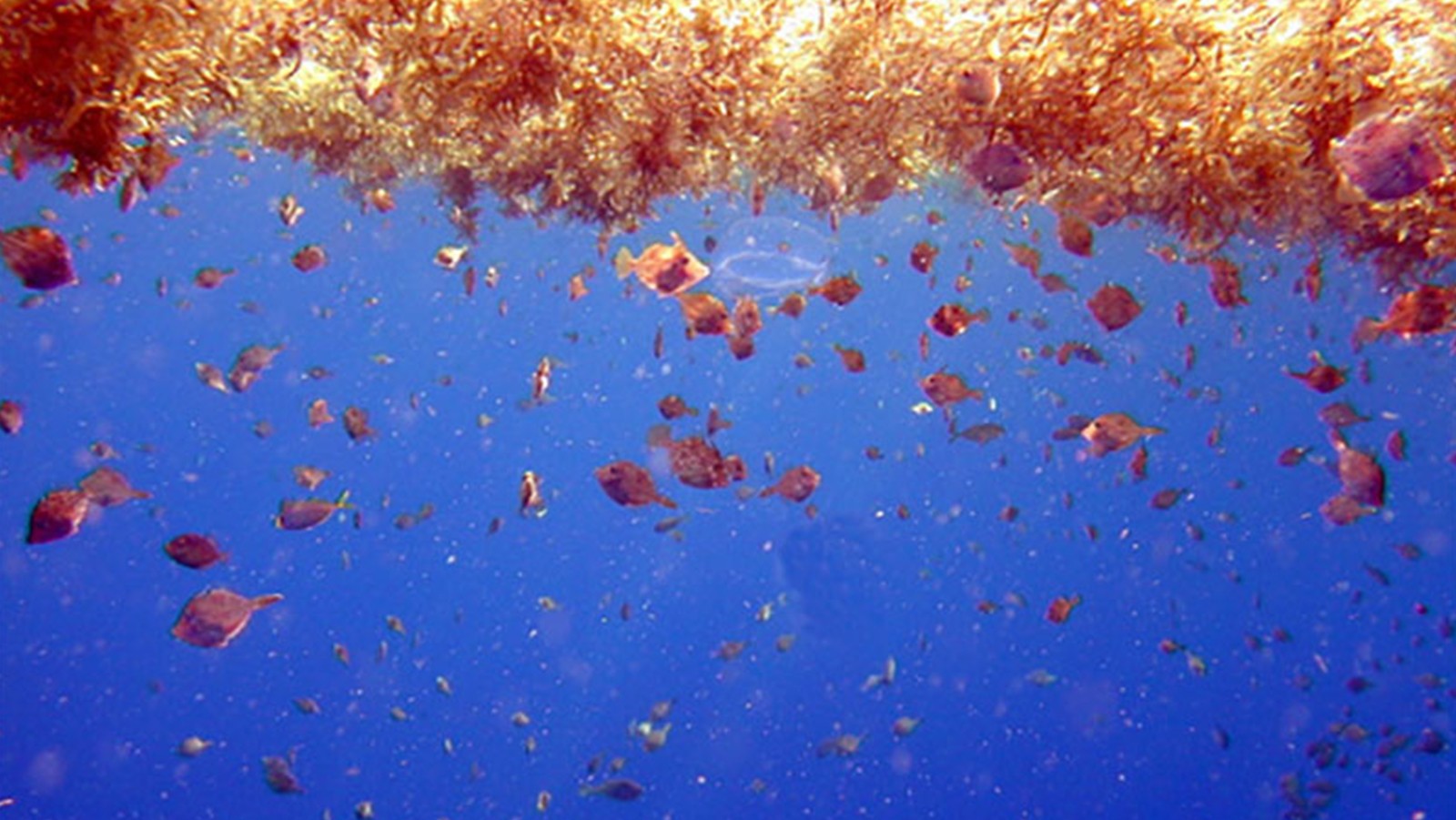Coastal communities surrounding the northern Caribbean Sea have experienced an abundance of brown algae, known as pelagic Sargassum, washing up along their beaches since 2011. In a recent study conducted by AOML scientists, it was found that Sargassum beaching predictions can be improved by accounting for windage in models.
Sargassum floats in dense mats along the surface of the ocean until it washes up on shore. When large amounts of Sargassum enter coastal waters, it can act as marine debris, disrupting ship traffic, fishing, and tourism, and can also alter coastal ecosystems with negative impacts to corals, seagrass, and water quality.
In 2018, AOML researchers released GPS-equipped drifters into the tropical Atlantic Ocean and the Caribbean Sea to study how ocean currents and wind patterns play a role in the distribution of Sargassum. The drifters were used to gain a better understanding of how Sargassum moves on the ocean’s surface to improve predictions of the timing of its entry into the Caribbean Sea as well as when and where the Sargassum will hit the coast.
To further this study, AOML scientists used GPS-trackers affixed to actual Sargassum, oceanographic drifters, and “pseudo- Sargassum” (synthetically made Sargassum mats) to obtain data on the movement of Sargassum and ocean currents. This experiment was trying to understand how closely the drifters and the pseudo-Sargassum tracked in the Global Hybrid Coordinate Ocean Model (HYCOM) followed the path of actual Sargassum. The Global HYCOM is a common model used by oceanographers to track dispersion.
The study also assessed whether adding different windage-factors to the model reduced the separation distance between actual Sargassum and the synthetic particles. The results showed that modifying the model to account for windage could improve the predictions of Sargassum moving from the open ocean to coastal waters.
Results from this study can be used in the development of a forecasting tool to identify where Sargassum is likely to wash ashore, which will provide coastal zone managers warning of extreme amounts of Sargassum beaching.
